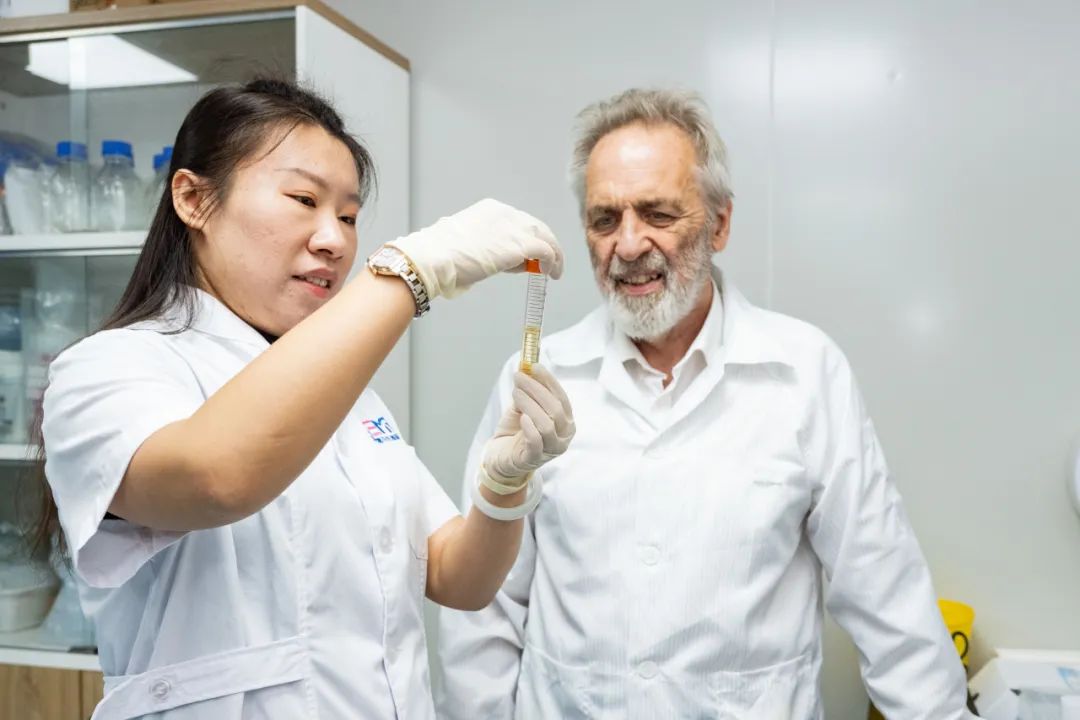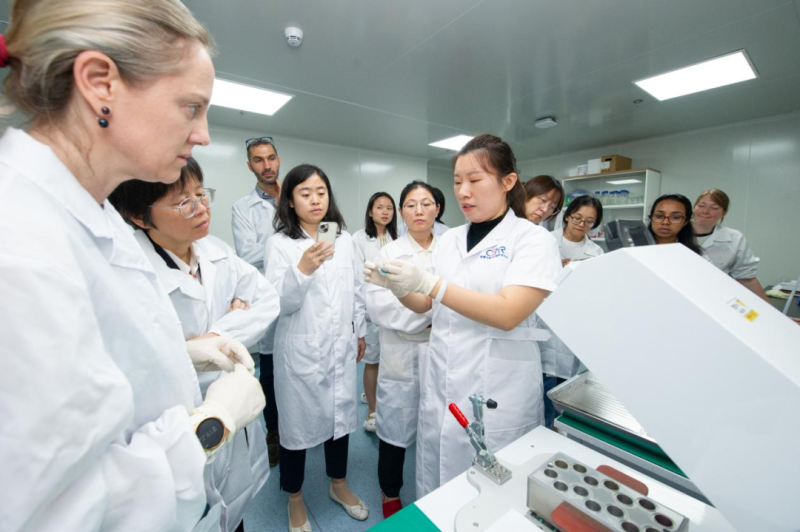SIAT Successfully Hosts International DLW Training Workshop
Date:26-05-2024 | 【Print】 【close】
From May 7 to 10, the Shenzhen Institute of Advanced Technology (SIAT) of the Chinese Academy of Sciences hosted a successful training course on Doubly Labelled Water (DLW) technology, organized by the International Atomic Energy Agency (IAEA). The event attracted several scientists from countries including Thailand, Lebanon, Rwanda and Brazil to SIAT to learn and discuss DLW method.
"There are not many DLW laboratories in the world. It is very exciting that China has the first DLW laboratory, which is significant not only for the region but also internationally. This will enable us to measure more DLW samples, study fundamental mechanisms in the field of energy metabolism, and understand the differences in DLW measurements globally," commented Alexia Alford, a nutrition specialist from the IAEA.
Daily activities such as walking, running, thinking, breathing, and cellular processes like growth and division are closely linked to energy metabolism. Many diseases, including obesity, diabetes, and cardiovascular conditions, are related to metabolic abnormalities. Understanding the patterns of energy metabolism can help people better understand their health and take preventive and therapeutic measures.
In the 1950s, American scientist Nathan Lifson invented the DLW technique to address the problem of measuring energy metabolism. The technique was first applied to humans in 1982. Researchers use DLW to collect and analyze urine samples from volunteers, measuring the enrichment of markers to understand the body's energy metabolism. Over decades of research and development, DLW has become the "gold standard" for measuring energy expenditure in free-living conditions.
In 1986, Prof. John Speakman began exploring and researching DLW technology and was one of the earliest scientists involved in establishing it. In 1989, he established a DLW laboratory at the University of Aberdeen in the UK. His book "Doubly labelled water Theory and practice," published in 1997, became an authoritative reference on the method and has been cited over 1,000 times. Prof. Speakman moved to China in 2011 to continue his research but had no immediate plans to establish a DLW laboratory due to the high cost and technical challenges involved.
In 2020, Prof. Speakman joined SIAT, marking the official start of China's first human DLW laboratory. Prior to this, only a few laboratories worldwide, including those at the University of Aberdeen, Baylor College of Medicine, the University of Wisconsin-Madison, and Japan's National Institute of Biomedical Innovation, Health and Nutrition, had this capability. China lacked specialized laboratories and teams for DLW analysis.
"Building the laboratory was not smooth sailing," recalled ZHANG Xueying, an associate researcher at SIAT's Institute of Biomedical and Health Engineering. Starting in 2016, Prof. ZHANG trained in DLW method and data analysis at Prof. Speakman's Aberdeen lab and Japan's research institute. Using this experience, she helped with equipment purchasing, installation, and personnel training over nearly four years, assisting Prof. Speakman in completing the lab.

Profs. Speakman (right) and ZHANG Xueying (left). (Photo by SIAT)
Since 2020, Prof. Speakman’s team has continued to advance research while improving the lab, publishing several important studies using DLW technology. For example, in 2021, Prof. Speakman's and international team published a study in Science that revealed human metabolic patterns across the lifespan, challenging the traditional belief that metabolism declines in middle age. In 2022, they published another Science paper on human water turnover rates, changing previous perceptions of water needs.
Currently, SIAT's DLW laboratory spans about 800 square meters, equipped to measure energy metabolism, physical activity, body composition, and cardiovascular health. The research team has also built Guangdong's first human metabolic chamber system, which will support clinical trials for drug screening and efficacy evaluation. Prof. Speakman explained, "In the metabolic chamber, volunteers can live for several days, allowing us to measure energy expenditure in real-time using high-precision gas analyzers. Combining this with DLW technology provides a unique research window."
"China's large population means that before our lab was established, there was a significant gap in DLW data from China," Prof. Speakman noted. The establishment of SIAT's DLW lab will greatly enhance domestic research collaboration.
According to the "Report on Chinese residents’ chronic diseases and nutrition (2020)," the overweight and obesity rates among Chinese adults are 34.3% and 16.4%, respectively, with over 50% of adults being overweight or obese. The trend is rising. Prof. Speakman emphasized, "With the increasing number of obese individuals in China, preventing obesity is crucial. Our research team is actively collaborating with companies to explore potential obesity treatments."
"In the past, we relied on foreign laboratories to use DLW method. Now, we can independently analyze DLW samples in China and attract scientists from other countries to learn here," Prof. ZHANG said, "our research team plans to collaborate with other DLW labs globally, conducting comparative and analytical studies to enhance research accuracy. "
Over the past 13 years, Prof. Speakman has witnessed significant advancements in Chinese science and technology. He expressed, "I hope to bring my expertise to China to further promote scientific development. Science is a global activity that requires international cooperation."
Looking ahead, Speakman and his team will continue to delve into energy metabolism research. "We are eager to collaborate with other Chinese laboratories interested in incorporating DLW method into their research. We also welcome partnerships with companies seeking new patented weight-loss products," Prof. Speakman concluded.

During the DLW Training Workshop, Prof. ZHANG Xueying is demonstrating the techniques for preprocessing DLW samples to foreign researchers. (Photo by SIAT)
Media Contact:
ZHANG Xiaomin
Email:xm.zhang@siat.ac.cn